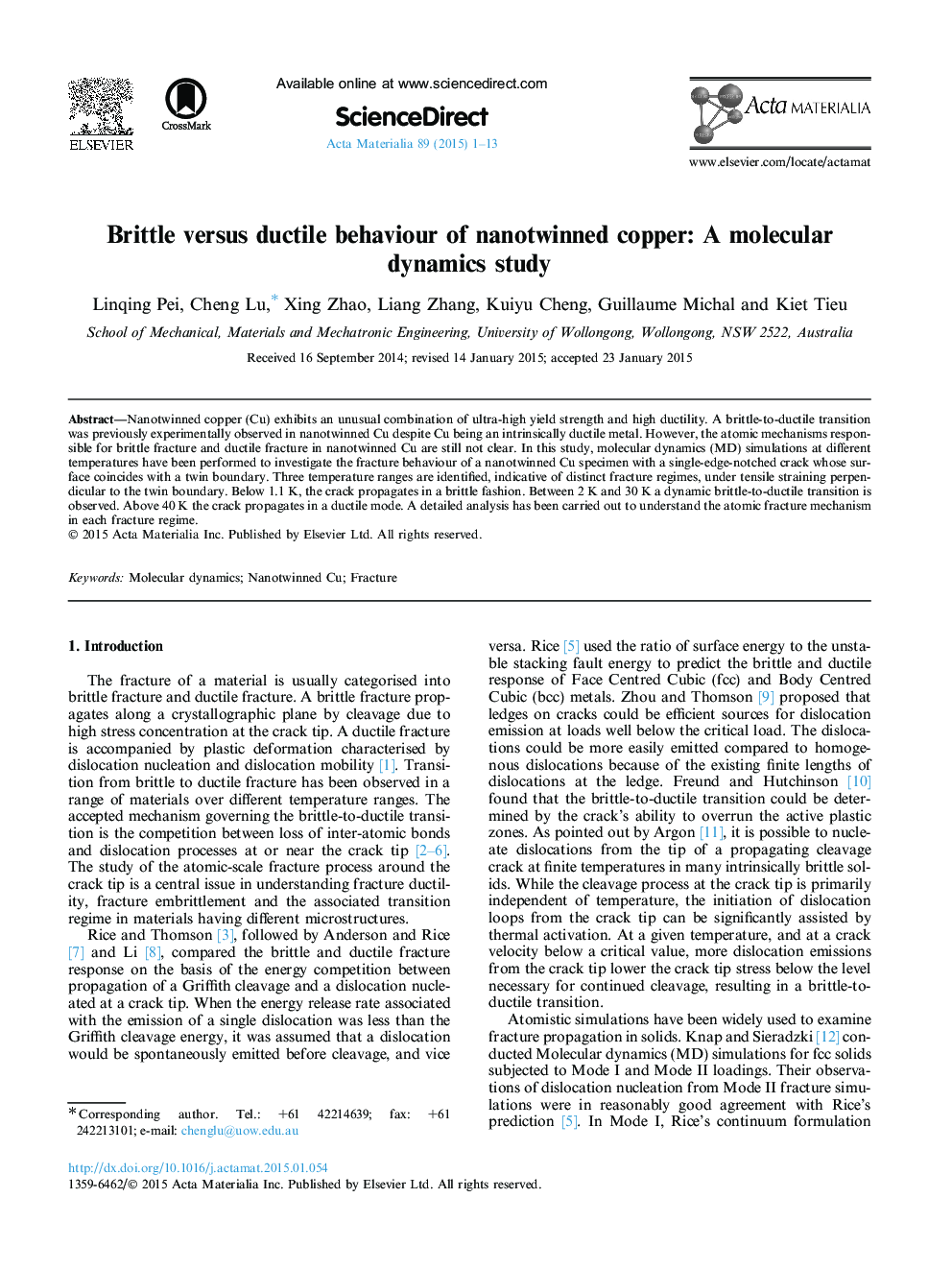| Article ID | Journal | Published Year | Pages | File Type |
|---|---|---|---|---|
| 7880120 | Acta Materialia | 2015 | 13 Pages |
Abstract
Nanotwinned copper (Cu) exhibits an unusual combination of ultra-high yield strength and high ductility. A brittle-to-ductile transition was previously experimentally observed in nanotwinned Cu despite Cu being an intrinsically ductile metal. However, the atomic mechanisms responsible for brittle fracture and ductile fracture in nanotwinned Cu are still not clear. In this study, molecular dynamics (MD) simulations at different temperatures have been performed to investigate the fracture behaviour of a nanotwinned Cu specimen with a single-edge-notched crack whose surface coincides with a twin boundary. Three temperature ranges are identified, indicative of distinct fracture regimes, under tensile straining perpendicular to the twin boundary. Below 1.1Â K, the crack propagates in a brittle fashion. Between 2Â K and 30Â K a dynamic brittle-to-ductile transition is observed. Above 40Â K the crack propagates in a ductile mode. A detailed analysis has been carried out to understand the atomic fracture mechanism in each fracture regime.
Related Topics
Physical Sciences and Engineering
Materials Science
Ceramics and Composites
Authors
Linqing Pei, Cheng Lu, Xing Zhao, Liang Zhang, Kuiyu Cheng, Guillaume Michal, Kiet Tieu,
